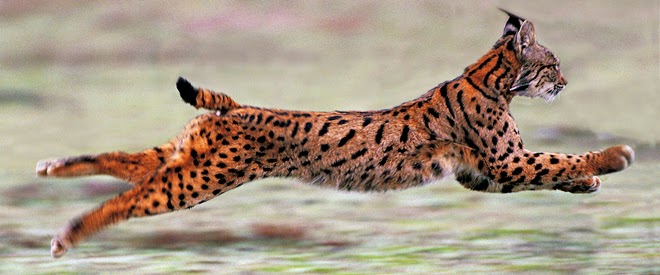Lynx pardinus is a species native to the Iberian Peninsula which is in a serious danger of extinction. It is the most threatened feline in the world.
According to the organization SOS Lynx if it went extinct it would be the first extinction after the one of Smilodon 10000 years ago (indeed it is not a subspecies of the European lynx but a species in its own right).
It is 85-110 cm long and 60-70 cm tall and weighs about 13 kilos. It eats rodents, birds, amphibians and small reptiles; its biggest prey is the hare. It lives in territories of approximatley 10-20 square kilometres.
Up to the half of the 19th century it was present in almost all the Iberian Peninsula. Nowadays there are only two small zones left in Andalusia, in southern Spain. In 2005 less than 100 specimens were counted, while in 2000 they were more or less 400 and in 1960 they were 4000.
The only zones in which they live now are Doñana National Park and Andujar Sierra.
The reasons for the disapperance of the Iberian lynx are the destruction of its habitat, voluntary or accidental poisonings, car accidents, wild dogs, poaching and the lack of preys.
Luckily, there are good news. In 2005, precisely on the 29th of March, there was the first birth in captivity. In the two zones populated by the lynx, great efforts have been made and this species is on the road to recovery. In 2008 in the Andujar zone the maximum capacity was reached (150 speecimens).
Now it is estimated that from here each year approximately 20 specimens are taken to be reintroduced in other zones.
(Thanks to Lorenzo S. for helping me writing this post)

No comments:
Post a Comment